17 Things To Take Out Of Your Wallet Before You Travel
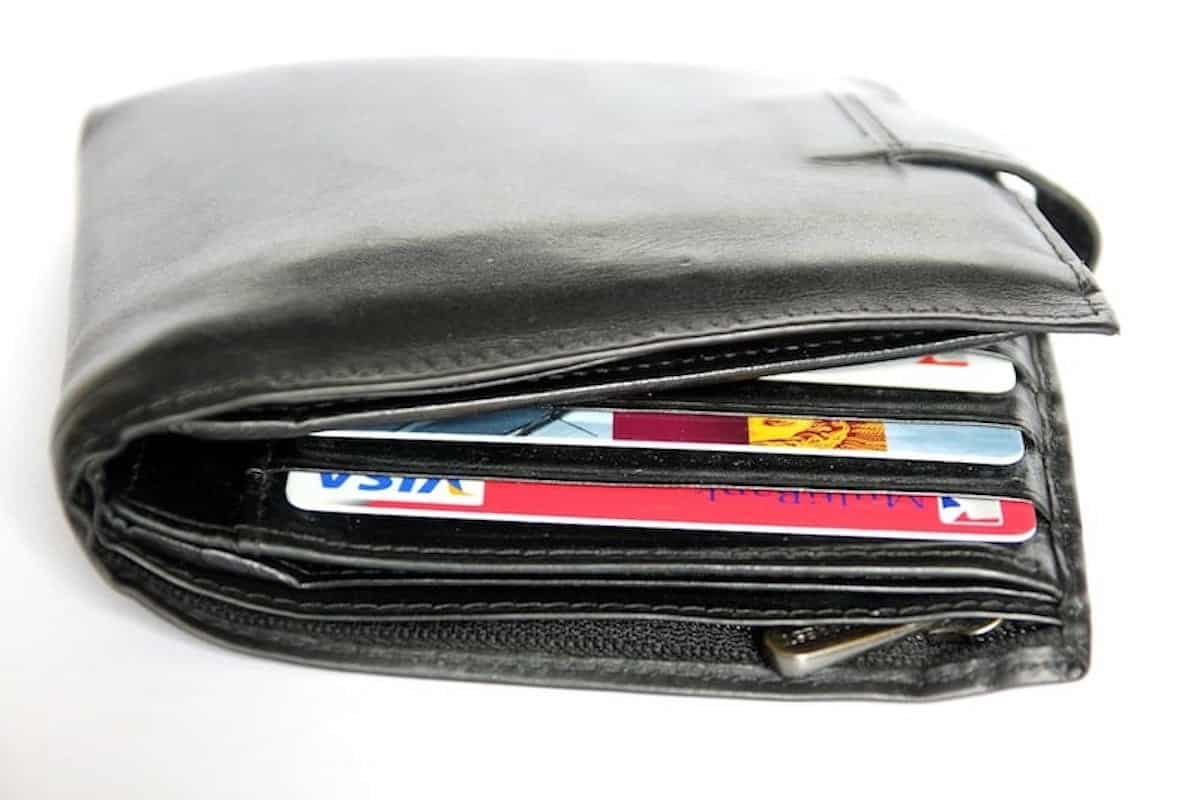
You’ve packed your bags and may think you’re set to go, but don’t forget to prune your wallet before you travel.
It is important to think about what to take and what to leave behind.
I recently was a victim of wallet theft close to home and felt stupid for not periodically taking an inventory of what I carry with me.
My loss took place in a HomeGoods store in my neighborhood. Trying to reconstruct what I had in my wallet after the fact was painful, and canceling and replacing compromised cards was time-consuming!
With crime rampant in large cities and small towns, you can’t be too careful about guarding your personal belongings, whether you’re at home or away. But the risks of losing your wallet or having it stolen multiply when you’re traveling.
You’re more likely to find yourself shoulder-to-shoulder amidst crowds at airports, on busy streets, or on public transportation than you would when in your own neighborhood.
In addition, when traveling, you may be awkwardly weighed down with suitcases and carrying other paraphernalia—all of this in a new place offering novel distractions that capture your attention.
Lift your two arms to take a photo, and a clever pickpocket may be there to take advantage of the situation. That’s what happened to my husband in Bologna.
It’s not surprising that any of these circumstances dramatically increase the risk of losing your personal belongings or becoming the victim of a pickpocket.
I’ve left clothes behind in hotels and phone chargers plugged into walls. But small losses like these pale in comparison to losing your wallet or purse. The financial and emotional loss can be substantial, and worse than that, it can lead to the nightmare of identity theft.
Whatever our gender, we tend to accumulate “stuff” in our wallets, pockets, and purses. That’s why we all need to routinely prune our wallets and purses before a trip, taking as few things as possible with us—only the bare essentials.
This requires taking the time to think through what we absolutely need and what we don’t, which can vary based on our lifestyle, destination, and the type of trip we’re taking.
Here are 17 things you should take out of your wallet before you travel:
To begin the process, take everything out of your wallet and start from scratch.
1) Membership cards

While traveling, it’s unlikely you’ll need proof of organizational memberships.
One exception: If it’s a travel organization (e.g., one associated with travel discounts, like an AARP card or a travel card affording lounge access), take a photo of the front and back of the card with your smartphone or add your club membership number to a password saver.
2) Employee IDs
Unless you are on a business trip and plan to visit a satellite office, you aren’t likely to need a business ID.
3) Car registration/proof of automobile insurance
Unless you’re on a road trip using your own car, leave these at home.
However, you probably want to take your driver’s license with you as a form of photo ID. According to the Transportation Security Administration (TSA,), forms of valid identification to get on a plane include:
- Driver’s licenses or other state photo identity cards issued by a DMV
- A U.S. passport or a passport card, or
- A DHS trusted traveler card.
However, beginning May 7, 2025, all air travelers ages 18 and over, will require a REAL ID-compliant driver’s license, state-issues enhanced driver’s license, or another acceptable form of ID to fly domestically.
Additionally, if you are renting a car abroad, you may need an International Driving Permit (IDP).
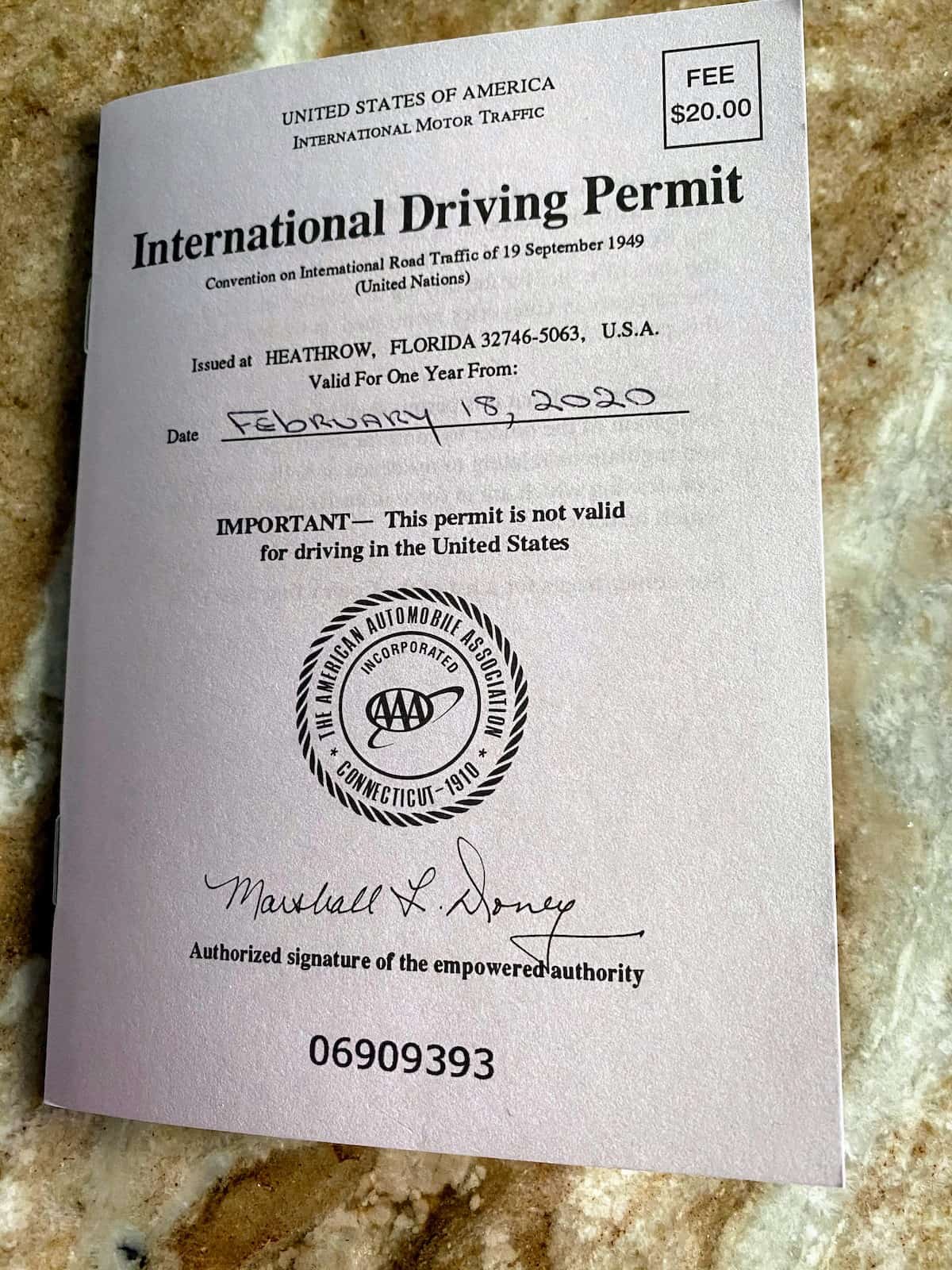
4) Department store charge cards
Unless you are going on a shopping trip and know that the chain stores at home will also be at your destination, leave your department store charge cards at home.
Even if that’s the case, it’s wiser to use a generic charge card (e.g., Mastercard, Visa, or AMEX) or record your department store charge card information in a secure password saver. Taking photos of the cards on your phone can be a big problem if your phone is lost and your card information is compromised.
5) Duplicate credit/debit cards
Credit cards
You won’t likely need two of anything.
Eliminate heft and reduce risk by eliminating redundancy. Limit your charge cards to one or two major cards, and if you have two credit cards from the same bank, only take one (making sure it has the lowest foreign transaction fee if you are traveling internationally).
Also, make sure that the card(s) you take are accepted by most businesses where you are traveling. I prefer using my American Express card, but some merchants only accept Visa or Mastercard, which charge them lesser fees.
Debit cards
While debit cards are helpful to people who want to be cautious about racking up credit card debt, they do not offer the same fraud protections as credit cards. If you do not report unauthorized transactions on a debit card within 60 days of your statement being sent to you, you may be liable for them.
6) Library cards and supermarket cards
You won’t need your local library card, supermarket cards, or the keychain dangles associated with your local drugstore or supermarket. Added heft also means added weight!
7) Sales receipts and dry cleaner bills
Put these in a safe place for when you return. They tend to accumulate and just add more unnecessary clutter.
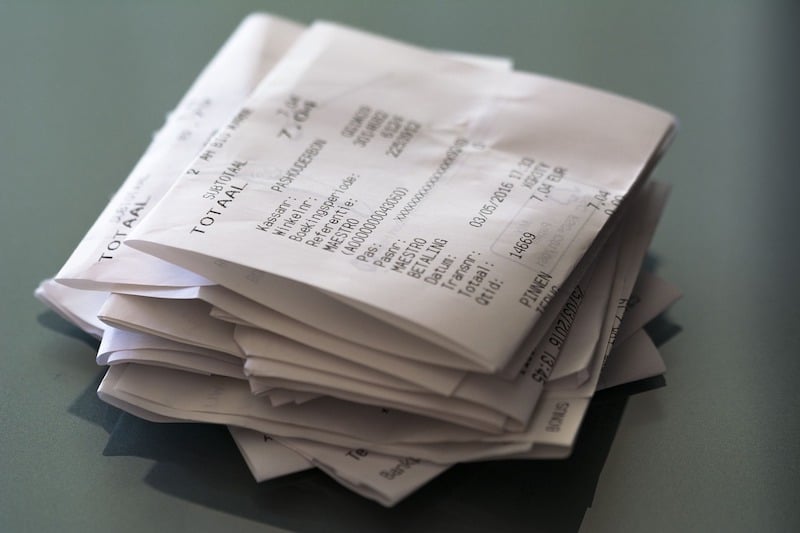
8) Local transit passes, or bus or metro cards
Unless you’re taking public transportation to the airport or taking a staycation, you won’t need these either.
Most public transportation systems allow for swiping with your smartphone.
9) Treasured photos
Even if you just carry one treasured photo of your partner, your kids, your grandkids, or your pet, keep these images on your smartphone and leave the originals safely at home.
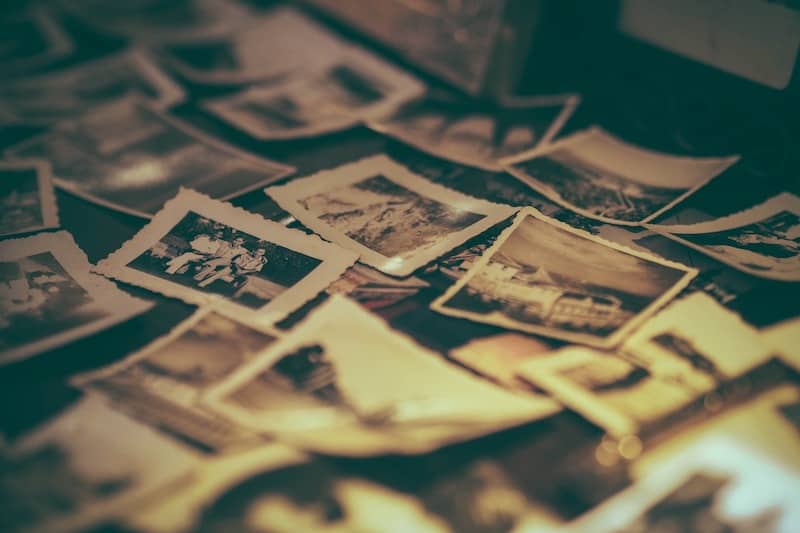
10) Gift cards
Losing or misplacing a gift card is like losing cash. In fact, when my wallet was recently stolen, the first thing the culprit did was try to buy a gift card with my charge card. (Fortunately, the $500 purchase was declined by my credit card bank.)
Save gift cards for your use at home or for gifting when you return.
11) Other people’s business cards
While you might want one or two of your own (if you want more than that, certainly don’t keep them in your wallet) and there is absolutely no reason to add the bulk of carrying other people’s business cards with you.
If the card has contact information for someone you want to connect with on your trip, add his or her contact info to the address directory of your smartphone.
12) Airline loyalty cards
Again, they provide too much heft. Make sure you give your membership/frequent flyer number when you’re making your reservation, and keep these numbers on your smartphone.
TripIt is a wonderful trip planner and flight tracker that keeps your itinerary safe and also allows you to keep track of your membership (and points) in various frequent flyer programs.
13) Social Security numbers
Your social security card is one of the riskiest things to keep in your wallet. You know (or should know) your social security number by now and there are few times when you might need the actual card.
These risks of losing it are onerous because thieves can use it to open a line of credit in your name.
14) Health insurance cards
Don’t forget to take your health or medical insurance cards out of your wallet before you travel. When my wallet was stolen, I had to contact my medical insurers for replacements. However, a reminder: Do take information with the names and contact information of your doctors, dentists, lawyers, insurers, pharmacy, and next of kin in case of a medical emergency.
According to AARP, stolen Medicare numbers are often used to file false claims for reimbursement. Here is some further information from Medicare on what to do if your Medicare card is lost or stolen.
15) Blank checks
Never carry blank checks in your wallet. I can count the number of times on one hand when I have needed a check.
16) Unnecessary cash
Don’t take any unnecessary cash. Take only as much currency as you’ll need.
You may want enough foreign currency for the trip from the airport to your hotel and for snacks, tips, etc. Don’t take too much; you can also get more from an ATM at your destination. And leave heavy coins in your piggy bank.
17) Lottery tickets
If the lottery hasn’t been held before the date of your trip, you’ll find out that you didn’t win when you get back.:-)
This post with travel gear may contain affiliate links. This means that I may receive compensation if you click a link, at no additional cost to you. For more information, please read my privacy and disclosure policies at the end of this page.
Other tips on keeping your wallet and personal information safe:
- Think about the safest place to keep your wallet (e.g., in a front pocket for men, in a zippered purse for women), and be attentive to its whereabouts and the people around you.
- An RFID wallet or pouch can help protect you against identity theft. Every traveler has their own favorite type of wallet and Amazon offers a range of different styles of RFID wallets at different price points. One of my favorites: This Timberland wallet is right-sized to even fit in a small purse or crossbody bag. It is made of leather, is reasonably priced, and comes in a wide range of colors. I avoid black wallets like the plague because they are so easily lost in a purse or under a car seat.
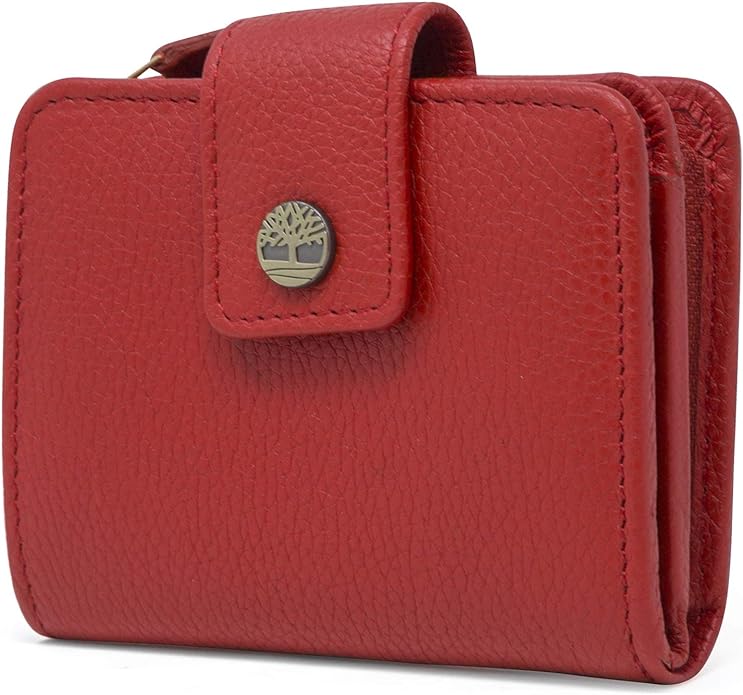
If you prefer a small pouch, Travelon is one of many companies that make inexpensive RFID-shielded pouches that can hold your passport, money, and cards. This set is for both cards and passports.
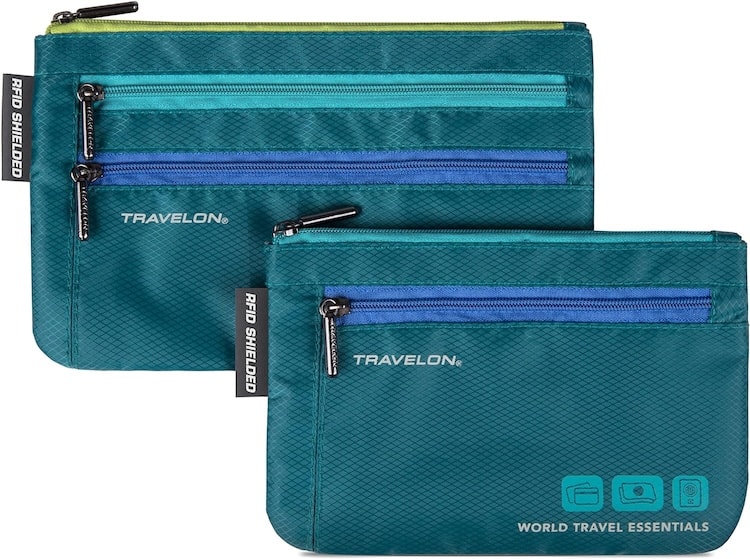
- Use your password-protected smartphone to copy information you might need but have taken out of your wallet. Put more sensitive information in a password manager.
When I filed a police report with my local police station, the officer on duty suggested that I carry an AirTag electronic tracker in my wallet in the future.
When I looked into the options, I decided to purchase this flexible AirTag holder, called TagVault, that you can slip into a wallet. It is just about the size of a credit card (although slightly shorter to stay hidden) and it adds no thickness to the AirTag.
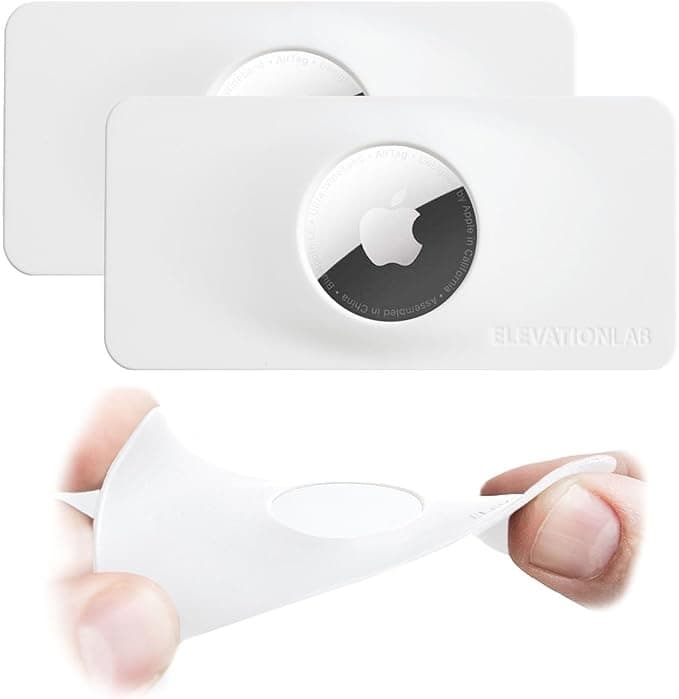
All photo credits: Pixabay
Save to Pinterest!!
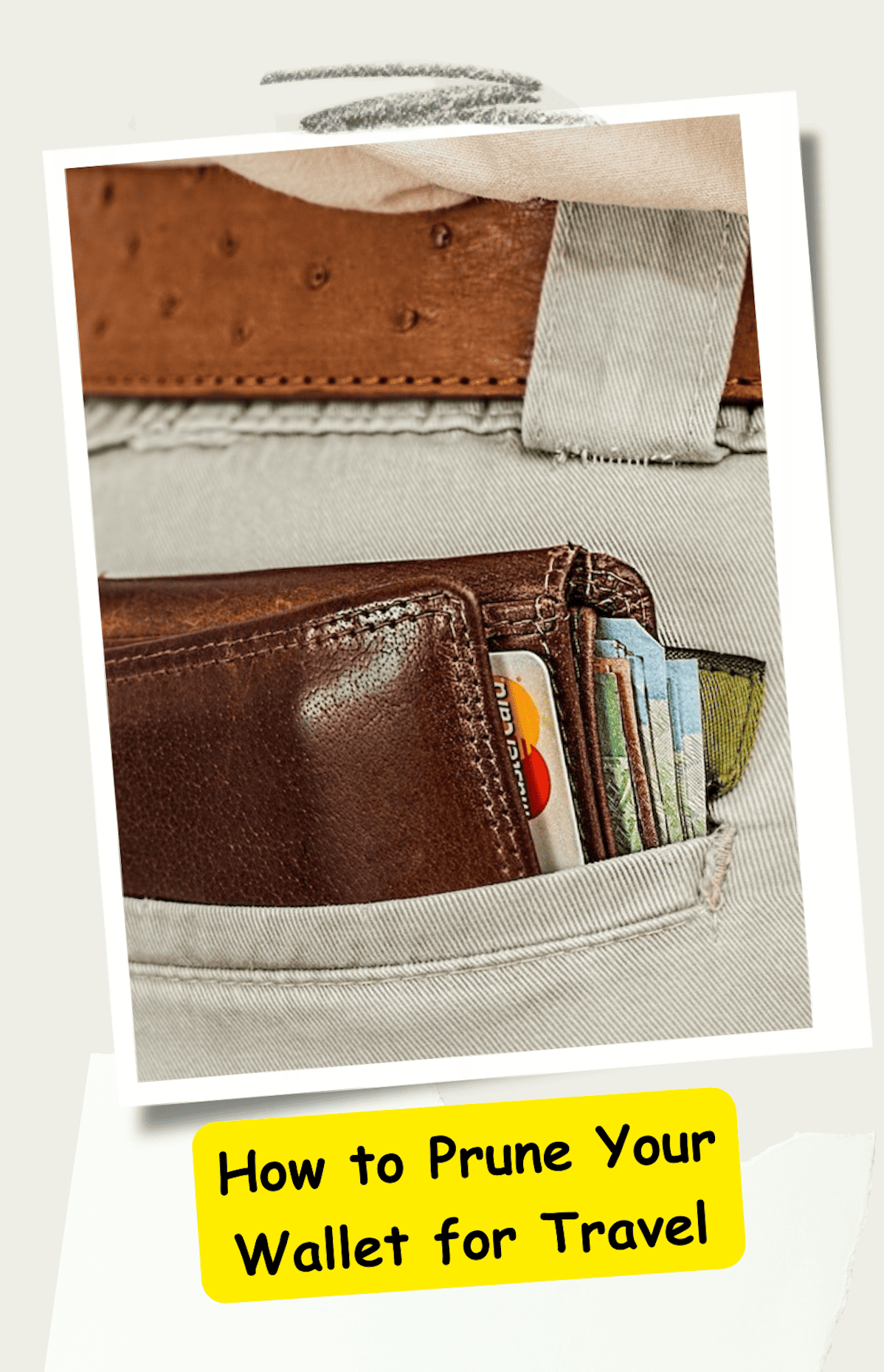




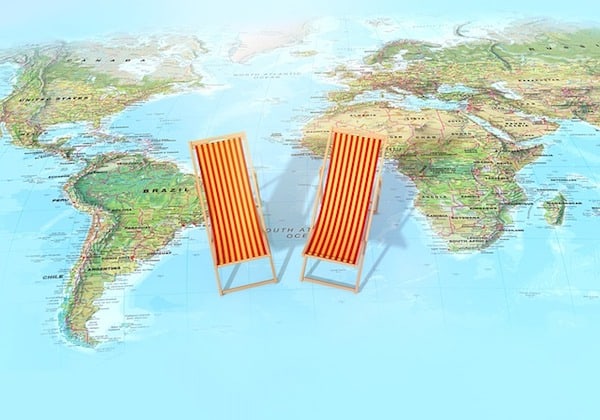

Great tips! I do this before I travel, too… No need to carry around all those unneeded cards!
I use a lightweight travel wallet and only put a few things in that!
Thank you for the reminder – I think many of us bring far too much when we travel. I have lightweight, flat travel wallet that I use and it really helps keep things simple! Thank you for the tips!
Not just for travel. I started doing than a while back when my wallet got too fat . Medical providers and my 2 local libraries scan the picture of my cards.
Many Insurance companies will let you download their app, but having a picture on your phone is better, especially if WiFi isn’t easily available when you need it.
A great permanent improvement.